The Museum of Modern Art first envisioned this global visual arts program in 1953, and President John F. Kennedy formalized it at the U.S. Department of State in 1963.

The Museum of Modern Art (MoMA) in New York City forms an International Council to facilitate exhibitions of American art around the world. A trial exhibition of American art is first sent to the embassy residence of Ambassador L. Corrin Strong in Oslo, Norway. Several works from MoMA are lent to the residence including Alfonso Roybal’s Green Corn Ceremony, John Kane’s Homestead, Walter Kuhn’s Apples in the Hay, and Stuart Davis’ Summer Landscape.

The International Council at MoMA becomes incorporated as a privately supported educational group. It consists of 110 men and women from throughout the United States, interested in furthering the international exchange of the visual arts. Honorary members of the council include Mrs. John F. Kennedy, Senator J. William Fulbright, and C. Douglas Dillon. Mrs. L. Corrin Strong begins fundraising to support more American artwork going abroad to embassy residences.

Career diplomat Stanley and wife Shirley Woodward establish a private, non-profit foundation and begin a joint loan program with MoMA and the Department of State. They purchase works of art, which eventually total over 500 pieces (including works by Josef Albers, Robert Motherwell, Helen Frankenthaler, Jasper Johns, and many others). The contemporary works are loaned out to departing American ambassadors for use in official embassy residences. Shirley Woodward is one of the first to call the loaning of these works “Art in Embassies”.

The International Council of MoMA establishes an Art in Embassies project and coordinates with the Department of State to select appropriate residences. MoMA engages more than fifty museums across the U.S. to loan works to diplomatic posts with exhibitions “representing American creative achievements.” The first shipment of nineteen works goes to Bonn, Germany, to Ambassador and Mrs. Walter Dowling, and includes works by Americans Jackson Pollock, Edward Hopper, and Alexander Calder, and Germans including Max Beckmann and Emil Nolde. The exhibitions are originally sent for a period of one year to eighteen months, but are frequently extended. In 1960, sixteen exhibitions for U.S. embassy residences are planned, including Bonn, Tokyo, Reykjavik, Ottawa, Lima, Copenhagen, Paris, Lisbon, Addis Ababa, New Delhi, and Bangkok.
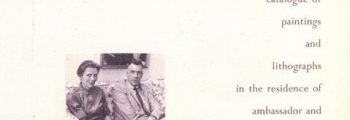
Robert H. Thayer, special assistant to the Secretary of State, proposes that U.S. embassies could be “windows through which the people of foreign countries can see American works of art of all kinds and periods.” His report, however, enjoys little circulation, until it is called to President John F. Kennedy’s attention almost two years later.
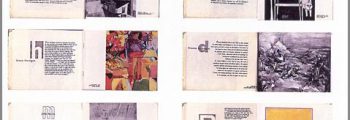
President Kennedy establishes, by executive order, an Advisory Council on the Arts including Nancy Kefauver, Art in Embassies first director, appointed by the President in November. Her initial project is the residence in Mexico City, for which, in her first four months in office, she puts together an exhibition of works by American artists who had worked or studied in Mexico. (Images of catalog pages taken from AIE exhibition catalog for the residence of Ambassador John Galbraith, New Delhi (1961).

Senator Thomas J. McIntyre of New Hampshire tells Congress: “Art in Embassies is based upon the belief that it is important for the embassies of the United States to reflect current and traditional culture of this country in an effective manner. One way to present the high level of American cultural attainment is through visual arts.”

MoMA’s International Council dissolves its Art in Embassies Committee on April 7, 1970. The U.S. Department of State coordinates all art exhibitions for diplomatic posts going forward.

The Woodward Foundation is dissolved, and the collection of art they amassed is disbursed as gifts to museums, including the National Gallery of Art, Washington; the Metropolitan Museum, New York City; the Philadelphia Museum, Pennsylvania; and others.

Art in Embassies becomes involved in the purchase of art for buildings in New Embassy Complexes around the world, creating permanent collections for each project.
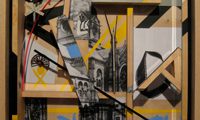
A program of artists’ exchanges is established by Art in Embassies, whereby American artists travel to the countries in which their art is displayed and conduct programming in the community, meeting with and collaborating with host country artists, students, and members of local arts and cultural organizations.
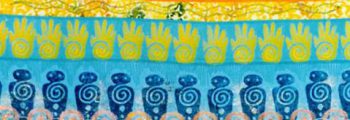
Art in Embassies is designated as the sole agent for the purchase of art for permanent collections in New Embassy Complexes, and makes use of this opportunity to greatly expand cross-cultural exchanges.

AIE embarks on a series of public-private partnerships to celebrate its 50th Anniversary year. The projects include photo exhibitions in partnership with the Department of Defense, multiple artist/student cooperative commissions, and other activities.
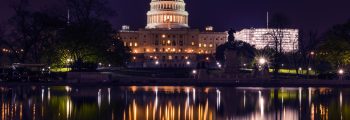
AIE embarks on a series of public-private partnerships to celebrate its 60th Anniversary year. The projects include Democracy Collection initiatives, multiple artist commissions, a student art contest, and panels and lectures in partnership with the Smithsonian’s National Museum of American Art and the University of Virginia’s Karsh Institute for Democracy.